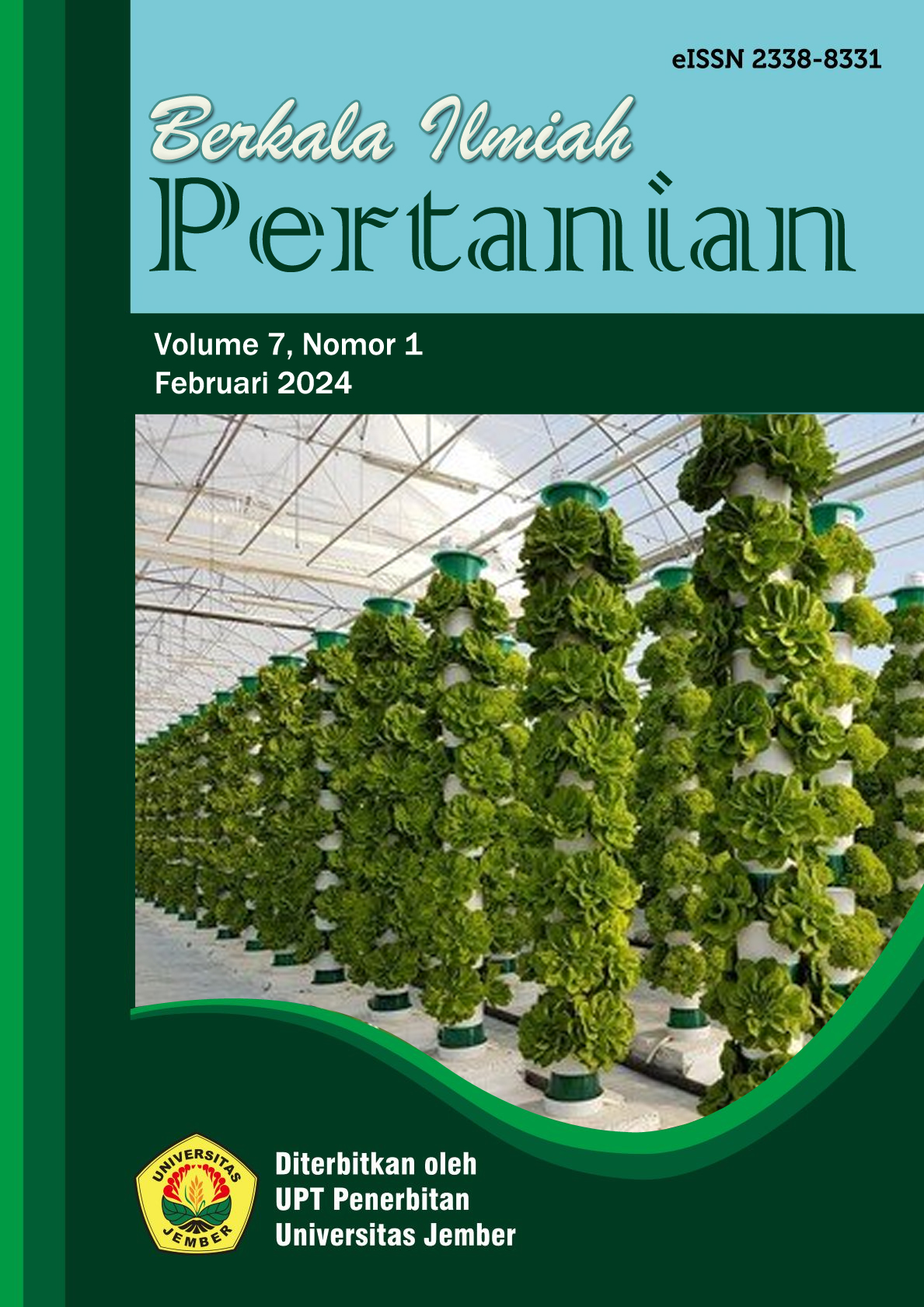Pengaruh Komposisi Media Tanam dan Konsentrasi Pupuk Organik Cair Daun Kelor (moringa oleifera L.) terhadap Pertumbuhan dan Hasil Tanaman Bawang Merah (Allium ascalonicum L.)
DOI:
https://doi.org/10.19184/bip.v7i1.42155Abstract
This study aims to determine the effect of the composition of the planting medium with the concentration of liquid organic fertilizer of Moringa leaves on the growth and yield of shallot plants. This research was conducted in October 2022 - March 2023 in the greenhouse of the Soil Science Study Program, Faculty of Agriculture, University of Jember. The study used a completely randomized design with 2 factors, there were 16 treatment combinations, 3 repetitions, and each repetition there were 3 experimental units, so that 144 experimental units were obtained. The first factor is the composition of the planting medium consisting of control; soil: cow manure (1:2); soil: cow manure (2:2) and soil: cow manure (3:2). The second factor was the concentration of liquid organic fertilizer for moringa leaves which consisted of control; 20ml/l; 50 ml/l and 80ml/l. The results showed that there was an interaction effect between the treatment of the composition of the planting medium and the concentration of liquid organic fertilizer of Moringa leaves on the fresh weight of the tubers and the dry weight of the tubers. The treatment of the composition of the planting media was able to increase the growth and yield of shallot plants, and the addition of liquid organic fertilizer for Moringa leaves was able to increase the growth and yield of shallot plants.
Downloads
Downloads
Published
Issue
Section
License
Authors who publish with this journal agree to the following terms:
1.Authors retain copyright and grant the journal right of first publication with the work simultaneously licensed under a Creative Commons Attribution-NonCommercial 4.0 International License that allows others to share the work with an acknowledgement of the work's authorship and initial publication in this journal.
2.Authors are able to enter into separate, additional contractual arrangements for the non-exclusive distribution of the journal's published version of the work (e.g., post it to an institutional repository or publish it in a book), with an acknowledgement of its initial publication in this journal.
3.Authors are permitted and encouraged to post their work online (e.g., in institutional repositories or on their website) prior to and during the submission process, as it can lead to productive exchanges, as well as earlier and greater citation of published work (See The Effect of Open Access).




















